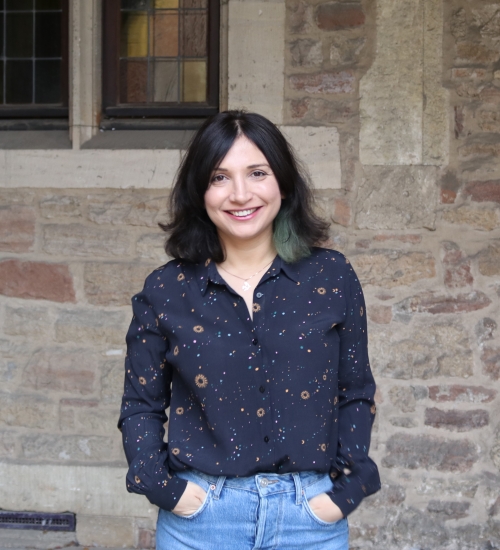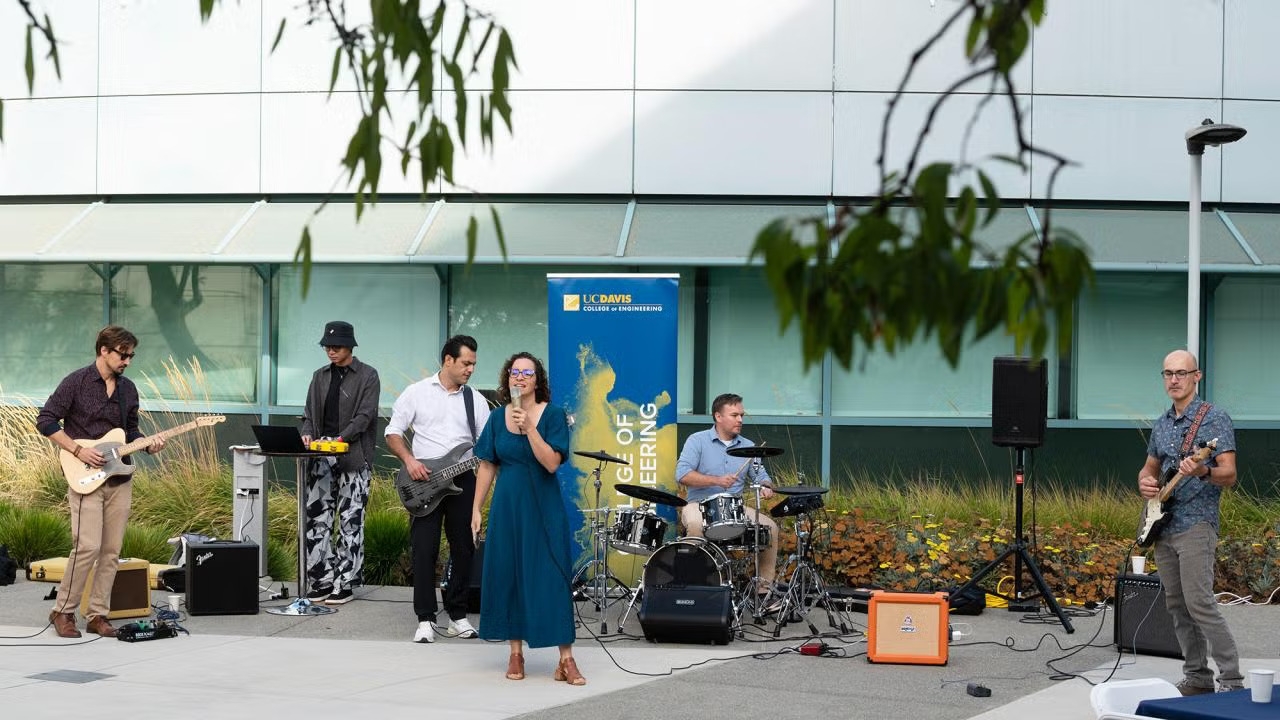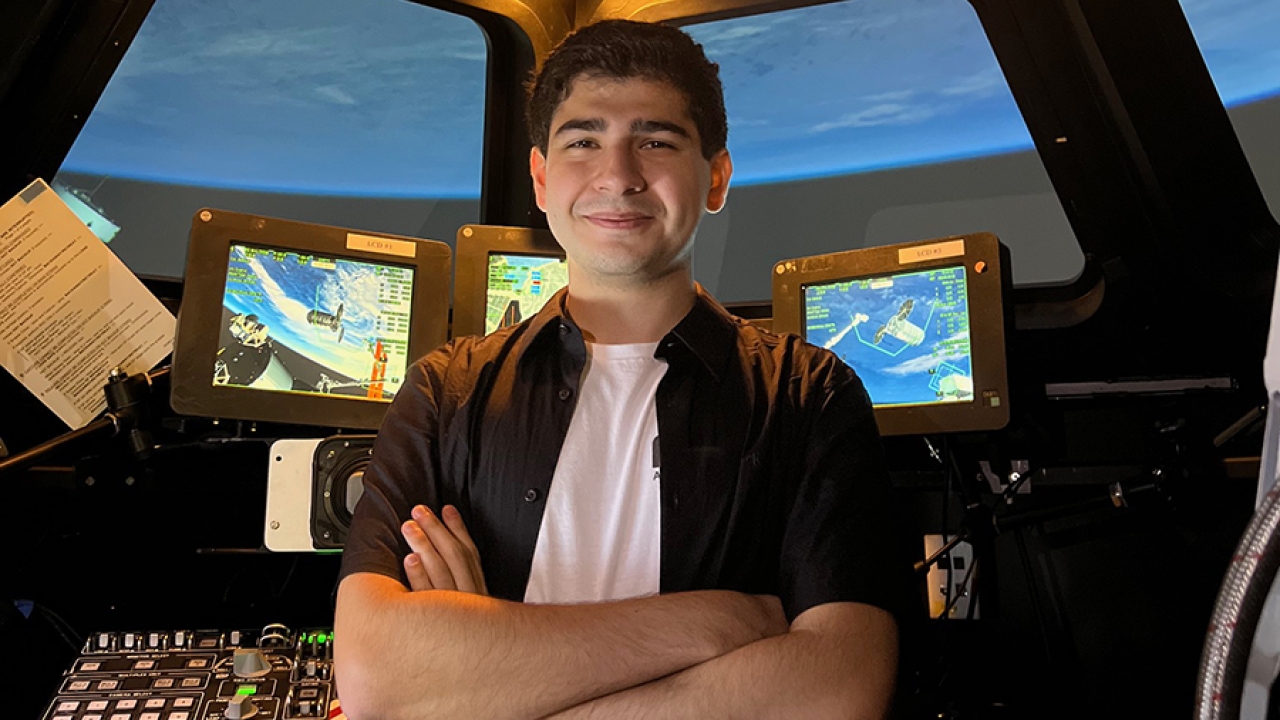Camli Badrya: Efficiency Through Aerodynamics
Badrya's Davis Applied Aerodynamics Lab studies the complex aerodynamics of air taxis and traditional aircraft

Aircraft are a crucial part of a modern, connected world, but they take a heavy toll on the environment. Even short flights can release hundreds of kilograms of CO2 into the atmosphere and create a massive amount of noise wherever they fly. Camli Badrya, assistant professor of mechanical and aerospace engineering at UC Davis, is looking to aerodynamics to help make all types of flying more efficient, sustainable and environmentally friendly.
“Airplanes were one of the most important inventions in the 20th century, but we want to go beyond the state-of-the art,” she said. “Can we design those vehicles to be faster and more efficient? We also want to have more green energy and sustainability so everyone can fly without a lot of great damage to the environment.”
Growing up in a small village in Israel, Badrya was fascinated by flight and engineering from an early age. She later received her B.S. at Technion in Israel and her M.S. and Ph.D. at the University of Maryland – College Park. Before joining UC Davis in 2022, she worked as a postdoctoral scholar at the University of Maryland and as a junior group research lead at the Technical University of Braunschweig in Germany.
At UC Davis, Badrya and her Davis Applied Aerodynamics Lab (DAAL) will focus on aerodynamics for urban air mobility (UAM) vehicles, also known as air taxis. UAM vehicles need to be quiet, maneuverable and able to operate safely over short distances in crowded city environments, which will require a new generation of aircraft designs.
Designing these UAM aircraft efficiently means having a thorough understanding of the complicated aerodynamics that come with urban environments. UAM vehicles are smaller than traditional aircraft, but still need to be stable in gusty conditions, fly at lower speeds and quickly take off and land. There are also a wide range of UAM designs and configurations that can incorporate multiple rotors, a fixed wing or a hybrid of both.
She plans to use a combination of computational models and wind tunnel experiments to work through this complexity to help develop UAM vehicles that are safe, quiet and aerodynamically efficient.
“If urban air mobility [vehicles] don’t satisfy certain standards, you cannot really operate them. In addition, so you have to have a breakthrough in the aerodynamics and develop the appropriate design models to address this,” she said.
Badrya also looks to continue her research on flow control for commercial jets. Turbulent flow causes drag and therefore can force aircraft to use more fuel, so her former group at the Technical University of Braunschweig looked at ways to curb turbulence both passively—through the shape of the wing’s airfoils—and actively, by applying a small amount of suction on the wing to extend the smooth laminar flow on the wing. Designing and incorporating these flow control methods would greatly reduce fuel use by commercial airliners. Her current work emphasizes a combination of fundamental and applied research to develop the next generation of aircraft, and she’s excited to take the next step as she starts her group at UC Davis. She’s excited not only to use the campus wind tunnel for experiments, but also to train the next generation of aerospace engineers who will design the aircraft of the future.
Badrya acknowledges that aerodynamics is just one piece of the puzzle to create greener aircraft, but she’s sustained by her lifelong love of flight and the opportunity to contribute to a much bigger picture.
“I want to encourage people to come and work on aerodynamics because it’s cool and I think they will find it fascinating,” she said. “What is equally important is to be able to educate new engineers so they can really solve all these challenges.”




